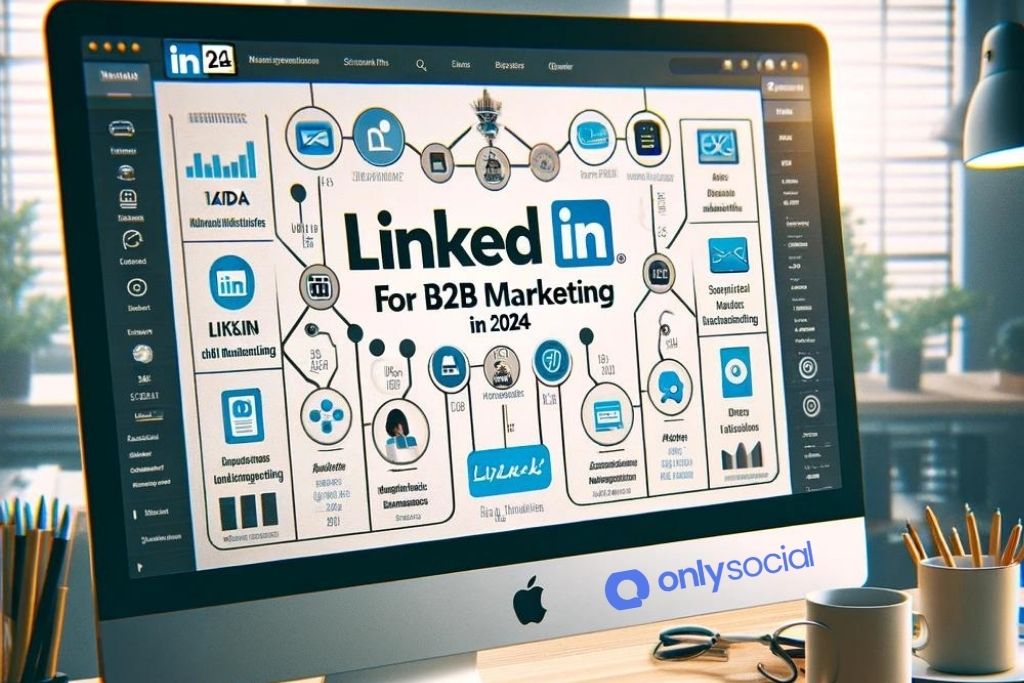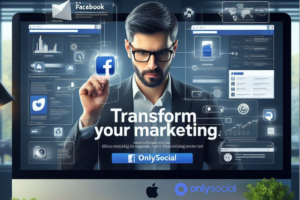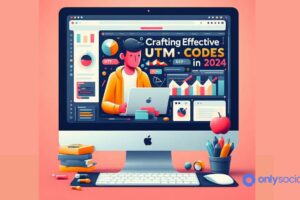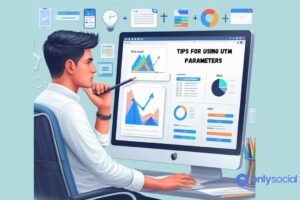As we venture into 2024, the landscape of B2B marketing continues to evolve, with LinkedIn standing at the forefront of this transformation. For businesses aiming to carve out a significant space in their respective industries, mastering LinkedIn for B2B marketing has become more than a strategy—it’s a necessity. This platform, known for its professional networking prowess, has morphed into a powerful hub for generating leads, building brand authority, and fostering valuable business relationships.
The coming year promises even more opportunities for businesses willing to innovate and adapt to the changing digital marketing trends. This guide delves deep into how LinkedIn can be leveraged more effectively for B2B marketing in 2024, unveiling strategies that go beyond conventional networking and content sharing.
We explore cutting-edge approaches to personalize content, engage with precision-targeted audiences, and foster collaborations that amplify your brand’s reach and impact. As the digital sphere becomes increasingly crowded, distinguishing your brand on LinkedIn requires a blend of creativity, strategic planning, and a keen understanding of the platform’s evolving capabilities. Let’s embark on this journey to unlock the full potential of LinkedIn for B2B marketing in 2024, setting a new standard for success in the digital age.
Table of Contents
Leveraging LinkedIn’s AI-Driven Personalization for Targeted Content Delivery
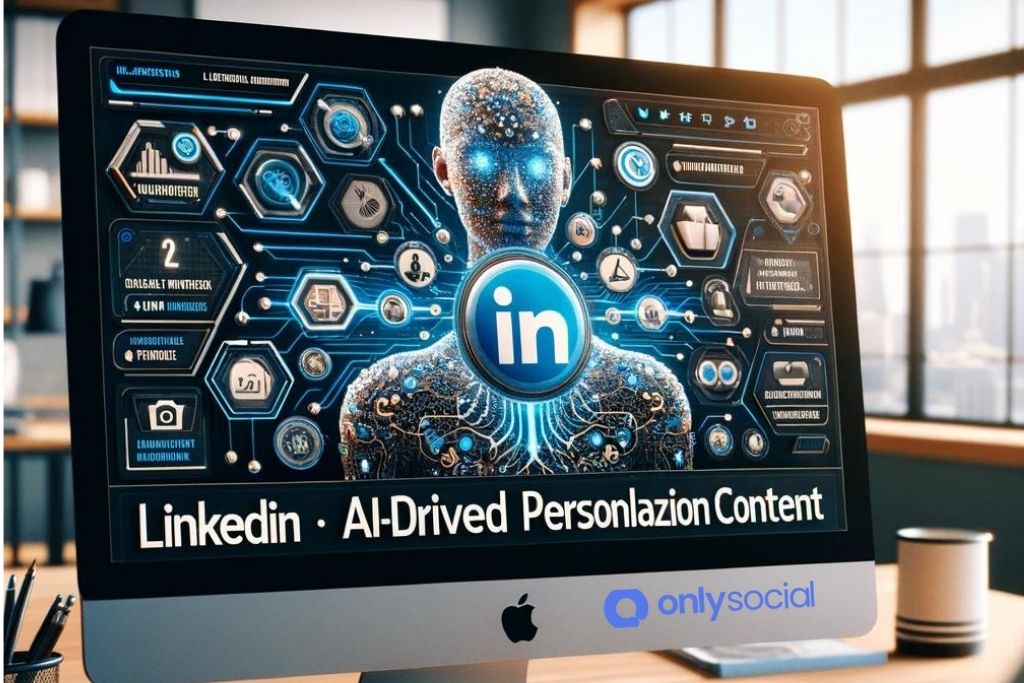
Overview LinkedIn’s AI-driven personalization has revolutionized the way businesses approach B2B marketing. This technology enables companies to deliver content that resonates with their target audience’s specific interests and behaviors, making LinkedIn for B2B Marketing in 2024 more effective and user-centric.
How it Works LinkedIn utilizes advanced AI algorithms to analyze a multitude of user interactions, including content engagement, search habits, and network activity. This analysis allows the platform to identify nuanced user preferences and serve them content that aligns with their professional interests and needs. For B2B marketers, this means the ability to reach potential clients with precision, presenting them with solutions that meet their current challenges or goals.
Strategies for Implementation
- Content Customization: Start by creating a variety of content types tailored to different segments of your target audience. Use LinkedIn’s insights to understand what topics and content formats resonate most with your prospects.
- Dynamic Content Creation: Develop dynamic content that adapts based on the viewer’s past interactions and preferences. This could include personalized article recommendations, customized video messages, or interactive posts that address the viewer’s specific industry challenges.
- Engagement Tracking: Monitor how your audience engages with your content. Pay close attention to the types of content that drive the most interaction and use this data to refine your content strategy over time.
- Continuous Learning: AI-driven personalization is not a set-it-and-forget-it strategy. Continuously analyze the performance data provided by LinkedIn to adjust and optimize your content delivery for better engagement and conversion rates.
Success Stories Many companies have leveraged LinkedIn’s AI-driven personalization to great effect. For instance, a tech company specializing in cloud solutions used personalized content streams to target CTOs and IT managers, resulting in a 30% increase in engagement and a significant uptick in qualified leads. Another example is a marketing firm that utilized dynamic content creation to tailor their messages to different industries, seeing a 25% rise in click-through rates and a 40% increase in webinar sign-ups.
By understanding and implementing LinkedIn’s AI-driven personalization features, B2B marketers can significantly enhance their content strategy. This approach not only increases the relevance and appeal of the content but also strengthens the overall impact of LinkedIn for B2B Marketing in 2024, driving higher engagement, lead generation, and conversion rates.
Interactive and Immersive Content Formats
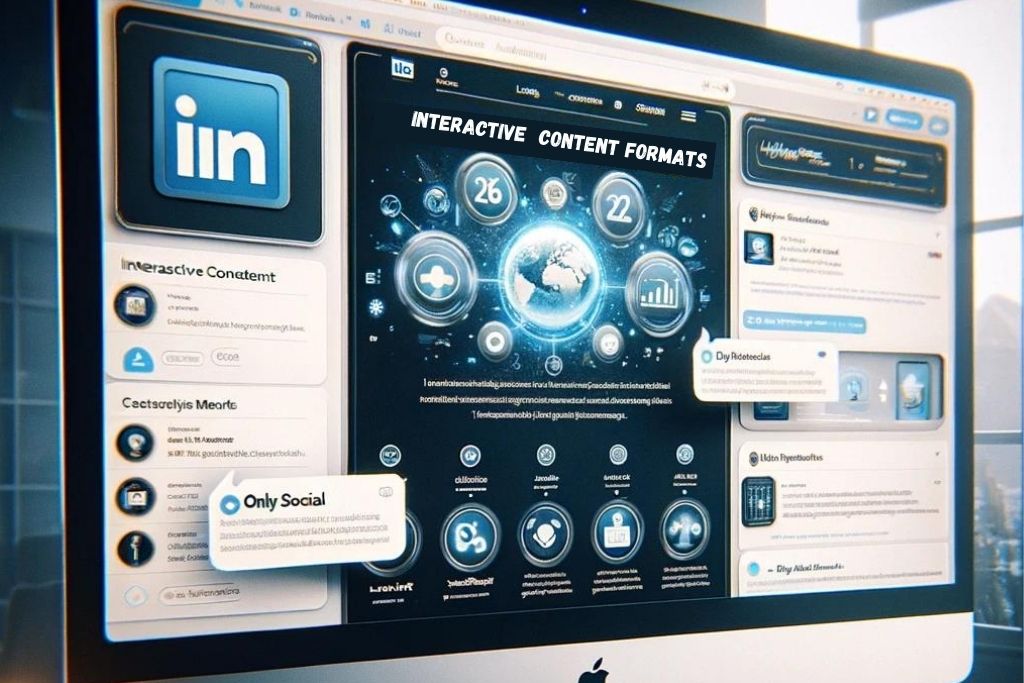
Exploring New Formats
In the realm of LinkedIn for B2B Marketing in 2024, standing out requires more than just posting regular updates and articles. The platform has evolved, offering a variety of interactive and immersive content formats that can capture the attention of your target audience more effectively. From LinkedIn Stories to live broadcasts, these formats offer a unique way to present your brand and engage with potential clients and partners.
Engagement Through Interactivity
Utilizing interactive features such as polls, Q&A sessions, and LinkedIn live videos can significantly boost engagement. Polls are not only a tool for gathering insights but also for initiating discussions and increasing visibility in the feed. Hosting Q&A sessions or live discussions on industry trends positions your brand as a thought leader, fostering a community around your content. Interactive infographics, embedded directly into your posts, can engagingly explain complex data, making them perfect for B2B audiences who value insightful content.
Incorporating LinkedIn Stories
Though traditionally seen in a B2C context, LinkedIn Stories offer a fresh avenue for B2B marketers to share behind-the-scenes content, quick updates, or highlight customer testimonials in a more personal and engaging format. This ephemeral content can humanize your brand and make your business more relatable to other professionals and companies on LinkedIn.
Leveraging LinkedIn Live for Real-Time Engagement
LinkedIn Live presents an opportunity to connect with your audience in real-time. This could be used for product launches, industry news updates, or live panel discussions with industry experts. The live format adds a layer of authenticity and immediacy that pre-recorded videos or written content cannot match, allowing for real-time interaction and feedback from viewers.
Case Studies
Highlighting successful use cases of interactive and immersive formats can provide inspiration and concrete examples of how to effectively employ these strategies. Whether it’s a B2B tech company that hosted a series of interactive webinars resulting in increased lead generation or a consulting firm that leveraged LinkedIn Stories to showcase client success stories, these examples demonstrate the potential impact of engaging content formats on LinkedIn for B2B marketing in 2024.
Advanced Segmentation and Targeting with LinkedIn Insights
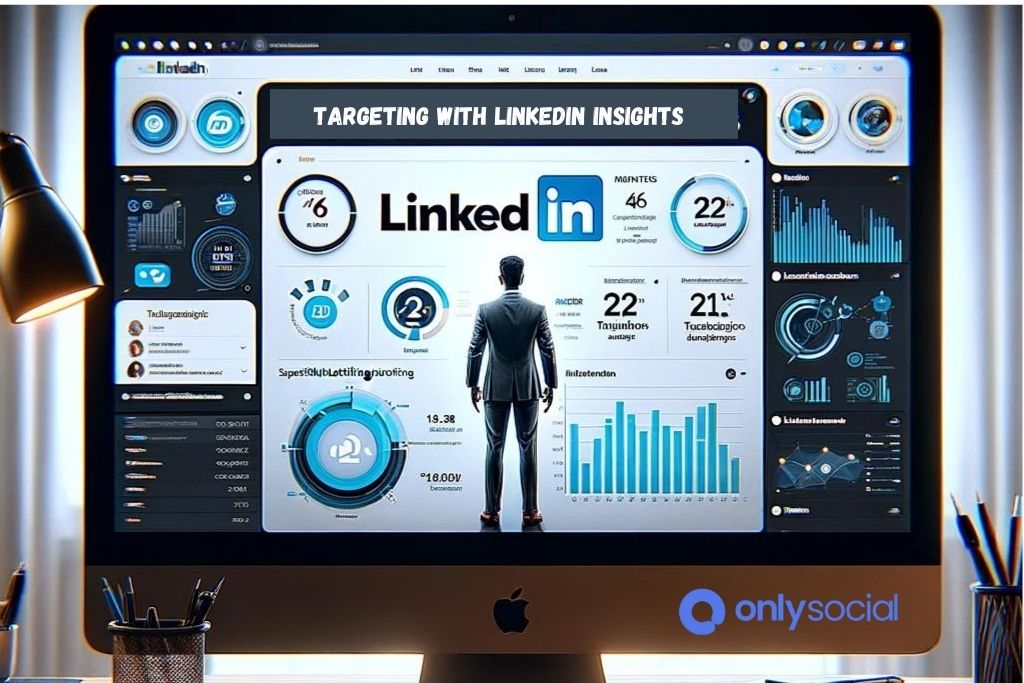
In the realm of LinkedIn for B2B Marketing in 2024, the capability to dissect and understand your audience through advanced segmentation and targeting stands as a pivotal strategy. LinkedIn Insights offers an unparalleled depth of analytics, enabling marketers to fine-tune their approaches with precision never before possible. Here’s how to leverage these tools to tailor your B2B marketing efforts effectively.
Deep Dive into LinkedIn Insights
LinkedIn Insights comprehensively looks at audience behaviors, preferences, and engagement patterns. This tool goes beyond basic demographics to offer insights into professional interests, job functions, and company sizes. By understanding these metrics, marketers can create highly targeted campaigns that speak directly to the needs and interests of their audience segments.
Tailoring Your Marketing Approach
Utilizing the detailed data from LinkedIn Insights allows for the crafting of customized messages and content strategies. Whether targeting decision-makers in specific industries or tailoring content to appeal to various job functions, the information available through LinkedIn can significantly enhance the relevance and impact of your marketing efforts. This tailored approach ensures that your messages resonate more deeply with your target audience, increasing the likelihood of engagement and conversion.
Practical Applications
- Industry-Specific Campaigns: By identifying the industries most engaged with your content, you can create campaigns that address the unique challenges and opportunities within those sectors.
- Function-Focused Messaging: Understanding the job functions of your audience allows for the creation of content that addresses their specific responsibilities and pain points.
- Seniority-Level Targeting: Tailoring messages based on the seniority level can help in crafting more appropriate calls to action, whether it’s for strategic decision-making or operational implementation.
Measuring Success
The effectiveness of segmented marketing efforts can be gauged through various LinkedIn metrics, such as engagement rates, click-through rates, and conversion rates. Additionally, LinkedIn’s conversion tracking tools allow for a deeper analysis of how well your targeted campaigns are driving specific actions, such as filling out contact forms or downloading whitepapers. By closely monitoring these metrics, marketers can continually refine their strategies to ensure they’re delivering the most relevant and impactful content to each segment of their audience.
By leveraging the advanced segmentation and targeting capabilities of LinkedIn Insights, marketers can create more effective and efficient B2B marketing strategies. This approach not only enhances the relevance of your content but also increases the overall ROI of your LinkedIn marketing efforts in 2024.
Strategic Partnerships and Collaborative Content
The Power of Collaboration in LinkedIn for B2B Marketing in 2024 Collaboration is a cornerstone of success in the digital world, especially on platforms like LinkedIn. For businesses looking to enhance their B2B marketing strategies in 2024, forging strategic partnerships and engaging in collaborative content creation offer unparalleled opportunities. These alliances not only broaden your reach but also reinforce your brand’s credibility and expertise.
Co-Creating Content to Amplify Reach Engaging with complementary businesses, industry influencers, and thought leaders to co-create content can significantly amplify your marketing message. Consider organizing joint webinars, co-authoring detailed guides or reports, and producing shared case studies that highlight mutual successes. This approach not only diversifies your content but also provides your audience with valuable, multifaceted insights.
Leveraging Each Other’s Networks for Expanded Visibility A key advantage of collaborative content on LinkedIn is the ability to leverage each partner’s network, thereby gaining access to a wider, yet still targeted, audience. Cross-promotion strategies, such as sharing each other’s posts, participating in LinkedIn groups together, or tagging each other in updates, can exponentially increase the visibility of your collaborative efforts.
Engaging in Thought Leadership and Joint Events Establish your brand as a thought leader in your industry by partnering with other leaders to host LinkedIn Live sessions, Q&A panels, and virtual conferences. These events are not only engaging but also position your brand at the forefront of industry conversations. They provide a platform for sharing insights, discussing trends, and showcasing innovative solutions relevant to your B2B audience in 2024.
Utilizing LinkedIn Features for Collaboration Make full use of LinkedIn’s various features to support your partnership and collaborative content strategies. LinkedIn Articles allow for in-depth exploration of topics, while LinkedIn Polls and Videos can add interactive elements to your collaborations. Utilizing these features can enhance engagement and ensure that your content stands out in the LinkedIn feed.
Success Metrics for Collaborative Efforts To effectively gauge the impact of your strategic partnerships and collaborative content set clear metrics for success at the outset. Track engagement rates, lead generation, website traffic referred from LinkedIn, and growth in followers or connections as direct indicators of your collaborative marketing efforts’ success.
BONUS
Leveraging LinkedIn for B2B marketing in 2024 is essential for growth. Utilizing LinkedIn Articles, engaging in Groups, customizing content, and analyzing data are key strategies.
Incorporate OnlySocial’s Post Planning and Scheduling to elevate your LinkedIn presence. Manage unlimited profiles and enjoy unlimited posting, ensuring your content is always timely and widespread. Try OnlySocial with a commitment-free 7-day trial today.
Frequently Asked Questions
How can I measure the ROI of my LinkedIn B2B marketing efforts in 2024? A: Measuring ROI on LinkedIn involves tracking various metrics such as engagement rates, click-through rates (CTR), lead generation numbers, and conversion rates from your content and ads. Additionally, analyzing the quality of leads and the cost per lead can provide insights into the effectiveness of your strategies. LinkedIn’s analytics tools offer detailed reports to help track these metrics.
What are the best practices for using LinkedIn ads in a B2B context? A: Best practices for LinkedIn ads include targeting your audience precisely using LinkedIn’s advanced segmentation tools, creating compelling ad copy and visuals, testing different ad formats to see what works best for your audience, and continuously optimizing based on performance data. Personalizing ads to your target segments can also significantly improve engagement and conversion rates.
How often should I update my LinkedIn content strategy? A: Your LinkedIn content strategy should be reviewed and updated quarterly to align with changing market trends, audience preferences, and business goals. However, it’s important to remain flexible and adapt your strategy based on real-time performance analytics and feedback from your audience.
Can small businesses compete with larger corporations on LinkedIn? A: Yes, small businesses can effectively compete with larger corporations on LinkedIn by leveraging niche targeting, focusing on building strong relationships, and showcasing their unique value proposition. Content that highlights expertise, personalized engagement with followers, and strategic use of LinkedIn features can help level the playing field.
What types of content perform best on LinkedIn for B2B marketing? A: Content that provides value to your professional audience tends to perform best, including industry insights, how-to guides, thought leadership articles, and success stories. Interactive content such as polls and videos, as well as posts that encourage engagement through questions or discussions, are also highly effective.
How can I increase my company’s visibility on LinkedIn? A: Increasing visibility on LinkedIn can be achieved by regularly posting valuable content, engaging with your network through likes, comments, and shares, using relevant hashtags, and participating in industry-specific LinkedIn groups. Additionally, encouraging your employees to engage with and share your company’s content can amplify your reach.
Is LinkedIn Premium worth it for B2B marketing? A: LinkedIn Premium can be a valuable investment for B2B marketing, offering advanced search capabilities, in-depth analytics, and the ability to send InMail messages to prospects outside your network. Whether it’s worth it depends on your specific marketing goals and the scale of your LinkedIn activities. Evaluating the features against your needs can help determine their value for your business.
How can I use LinkedIn for B2B lead generation? A: LinkedIn for B2B lead generation involves using targeted content, LinkedIn ads, personalized InMail messages, and strategic engagement in groups and industry conversations. Offering valuable resources such as eBooks, webinars, or free trials in exchange for contact information can also be effective. Tracking and optimizing these efforts based on analytics is key to success.

